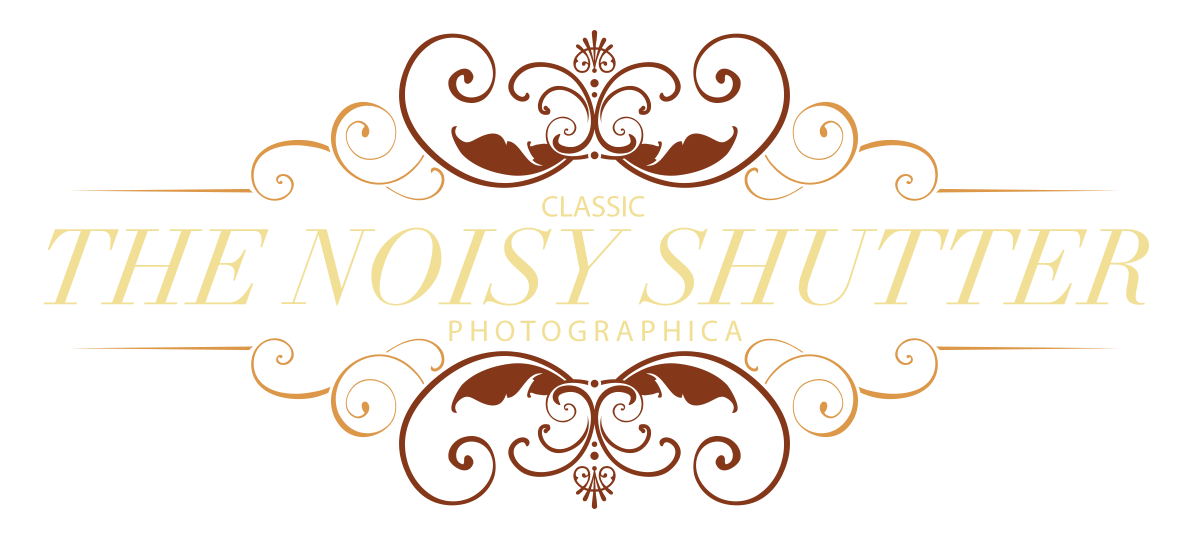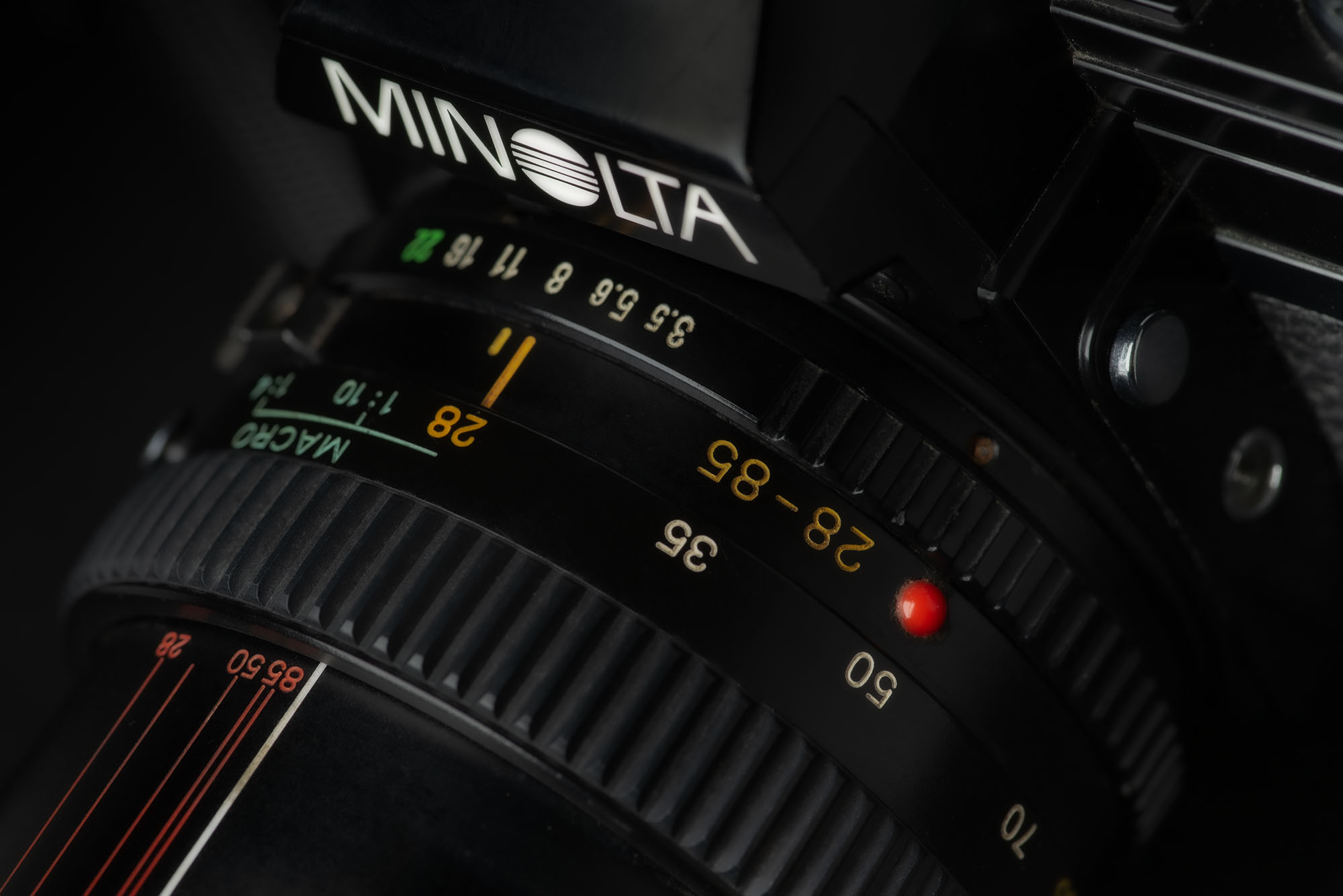Five years after the introduction of the first of the well-received 35-70mm zoom lens series, Minolta introduced this 28-85mm zoom. This lens expanded on that success, with both a wider and a longer focal length option. Could it be as good? Minolta never sat on its haunches, waiting for customers to show up. They had a history of innovation, always pushing the edge of the envelope. This zoom lens represents one of the forward leaps in their lens design.
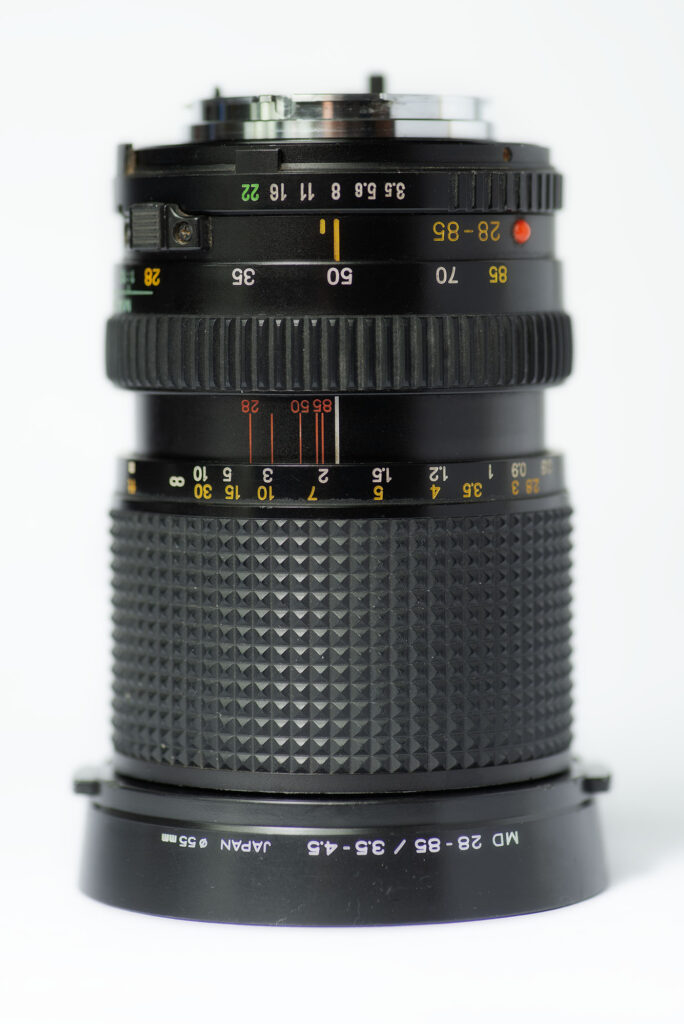
Introduced the same year as the third (and most desirable) iteration of the 35-70mm zoom, it also features the macro function. Granted, it is only a 1:4 magnification factor, but that was about the practical limit for a zoom lens as opposed to a dedicated macro lens that can reach 1:2 or 1:1. This new feature made this a very versatile lens for photographers that wanted a simple kit that covered multiple shooting scenarios. With a 75.4 degree angle of view on the wide (28mm) setting, and a 28.5 degree angle of view on the telephoto (85mm) setting, this lens has a respectably wide view through a moderate telephoto range. For typical holiday travel photos, a wide angle covers street and landscape scenes quite well, and 85mm is a classic focal length for portraits. Add to that a macro feature for close-up photos, and its usefulness just increased by that much more.
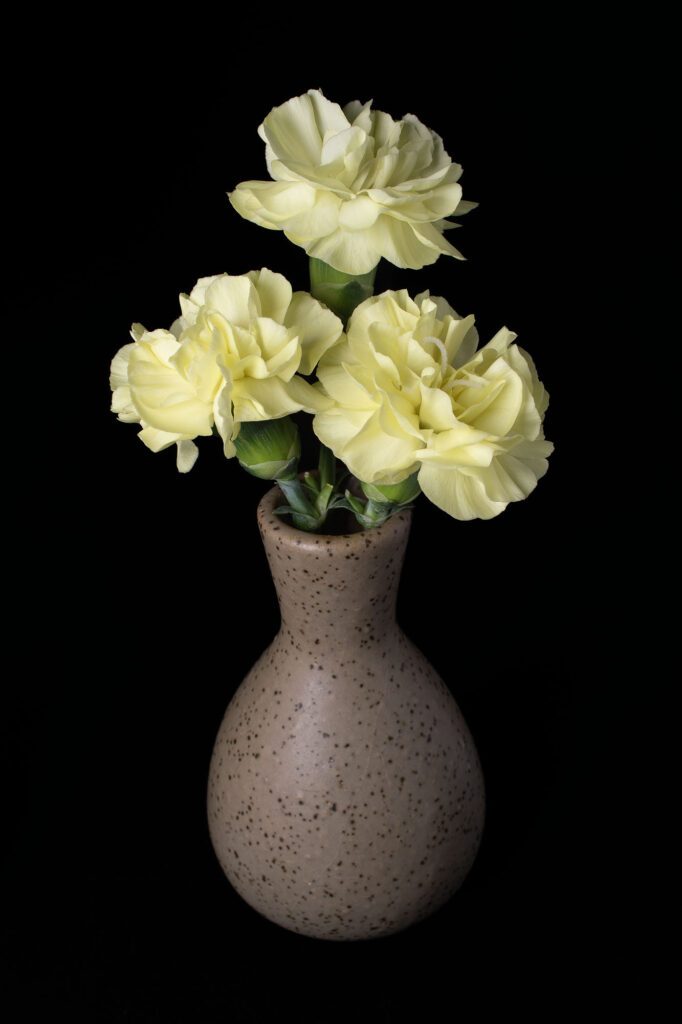
Minolta had been in collaboration with Leitz (Leica) for twelve years at this point. This union, I believe, resulted in a higher overall quality of work coming out of Minolta (even if it diminished the prestige of Leica in the eyes of the purists). Optical excellence became their standard, and engineering seemed to improve. I can neither quantity nor qualify this; it is merely my opinion. If you have been reading my insufferable twaddle up to this point, you will be aware of my favorable view of Minolta optics. I don’t hide it.
Many camera companies produced two lines of cameras and lenses, one for professionals and one for enthusiasts. Professional gear was built to higher specs with higher quality materials, commanding higher prices as a result. For some manufacturers this gap was significant, with lesser products being peddled to the masses. It seems to me that Minolta regarded enthusiasts and amateurs to be just as important to their bottom line, and didn’t shortchange them with inferior products. Whether this was a conscious executive decision or simply the result of corporate pride, I don’t know. The result is that many of their non-professional lenses have proven to be of very high quality and have withstood the test of time. This zoom lens is an example of that.

Much like their 35-70mm zoom lens offerings, this is a “two-touch” zoom system, which simply means there are separate control rings for controlling zoom and focus. The forward-most (and widest) control ring controls focus. It has a a checkered rubber grip. The middle ring is the zoom control and is more narrow with a ribbed grip. This allows tactile recognition while looking through the viewfinder. There is a button on the zoom ring that shifts the optics into macro mode, offering a 1:4 to 1:10 range of magnification. The rear ring is the aperture ring, and has a sliding switch locking the aperture at f22 for shutter-priority and full program modes offered on some Minolta bodies.
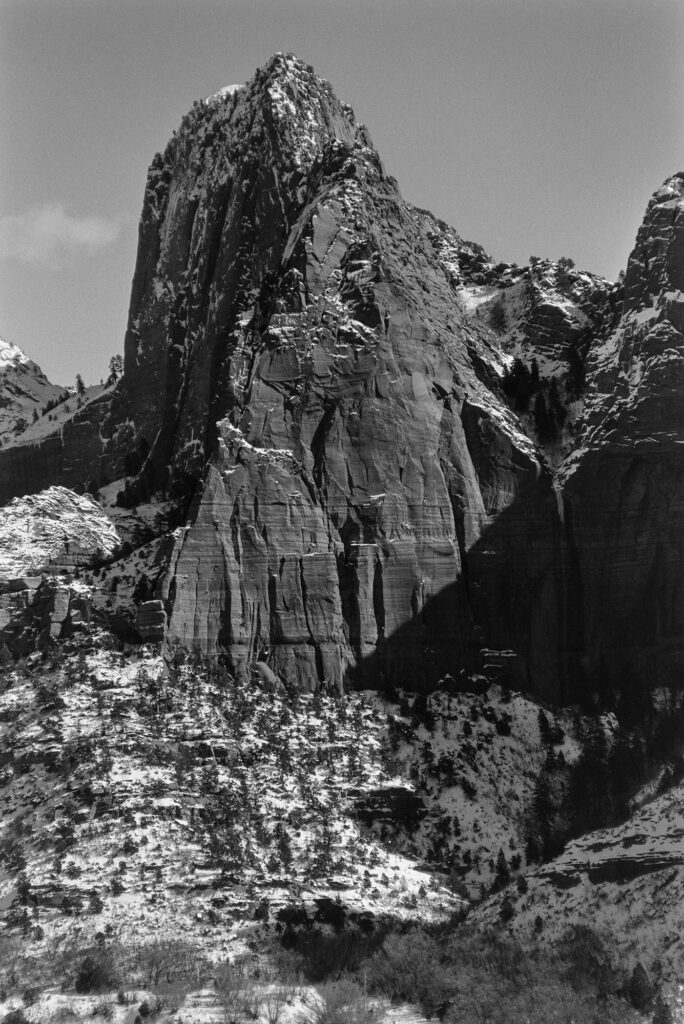
In multiple published tests available online, as well as in my own experience, this lens is optically very sound, It appears to compare respectably with Minolta prime lenses in the same focal lengths. My own informal tests comparing with my 28mm and 50mm Minolta Rokkor primes confirm this. Henri Cartier-Bresson stated that “Sharpness is a bourgeois concept”. While this may be true, it can also make or break an image. This lens delivers adequate sharpness at all focal lengths while delivering the beautifully consistent Minolta colors. It is simply reliable, robust, and an all-around great lens when wide apertures are not necessary. Of course, it has not replaced my faster primes, but it does attract my attention when I’m trying to travel light.

Another positive feature I feel compelled to mention is that the focal plane stays constant while zooming in or out. This is critical for a two-touch zoom, and not as much of an issue for a one-touch system. It would be a major inconvenience to have to switch back and forth between the zoom and focus rings while trying to compose the image. I typically focus first then adjust my framing with the zoom function. Sometimes I zoom in or out just a bit to fine-tune the composition or eliminate edge distractions. I appreciate not needing to readjust the focus every time I touch the zoom ring.
I must be fair and mention potential drawbacks, and so here they are. Part of the joy of these old lenses is the ability to adapt and mount them to modern digital cameras. When using this lens on my Sony mirrorless, I struggle to find the different control rings without having to look at them. I am accustomed to the rings’ locations when on a film body, but when offset by a thick adapter, it takes time to locate them, even with the different textures. This would work itself out over time, I’m sure, but for occasional use, three separate rings are about one too many. Zoom lenses with a “one touch” system of a large sliding ring for both zoom and focus are easier to use in that case.

Another inconvenience when adapting it to mirrorless cameras is the series of operations required to zoom, focus wide open, stop down the aperture, then take the photo. This is simply the nature of using vintage zooms lenses. Some may just use focus peaking with the aperture closed to the desired f-stop, and that’s fine. I like to initially compose the image while focusing wide open, to ensure the sharpest possible image of the subject without relying on the depth-of-field to cover it. The process takes time, and doesn’t lend itself to quick snapshots. This could be a dealbreaker depending on one’s shooting style and needs.

Also, some would consider the use of plastics in manufacturing to be inferior to all metal. I agree with this in a general sense, as metals are less prone to fail over time. That said, all of my Minolta lenses with plastics have held up quite well. The plastic parts on my Minoltas seem stronger, harder, and more precisely made than the plastic parts on other lenses I own (including Nikon). In Minolta’s defense, It appears that they managed to reduce weight and cost without sacrificing that much durability. Again, this is only my opinion. I’m not going to conduct a 3-meter concrete drop test to prove it.
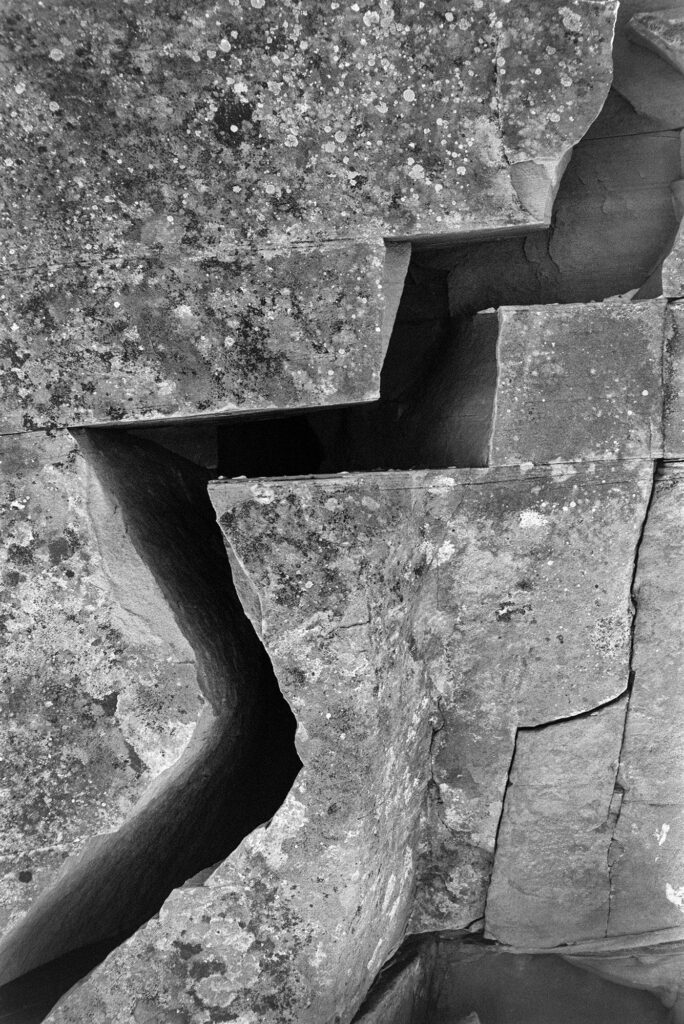
Overall, I have enjoyed this lens very much. It has been paired nicely with an X-7A body, providing a lightweight but very versatile system for general use. It is equally at home on any of the X or SRT bodies. For the price, I believe it represents an amazing value, both in terms of image quality and utility. Even with the tradeoff of being a relative slow lens, with today’s high ISO digital image quality and noise reduction in post-processing, this lens represents a versatile package capable of handling most situations quite well.

Specs as follows:
Designation: Minolta MD Zoom 28-85mm f3.5-4.5
Introduced: 1983
Construction: Metal, glass, plastic
Zoom Mechanism: Dual ring “two touch” system
Weight: 460g (16.2oz)
Optics: 13 elements in 10 groups, multicoated
Aperture: 6 blades, curved
Aperture Range: @28mm: f3.5-f22, @85mm: f4.5-f16 in half stops, full stop f16-f22
Minimum Focal Distance: 0.8m (2ft, 7in)
Macro mode: 1:4 to 1:10 magnification ratio
Macro Mode 1:4 Minimum Focal Distance: 25.4cm (10in)
Macro Mode 1:10 Minimum Focal Distance: 40.6cm (16in)
Filter Ring Diameter: 55mm
OEM Hood option: Clip on, for 28-85mm and 35-70 lenses
